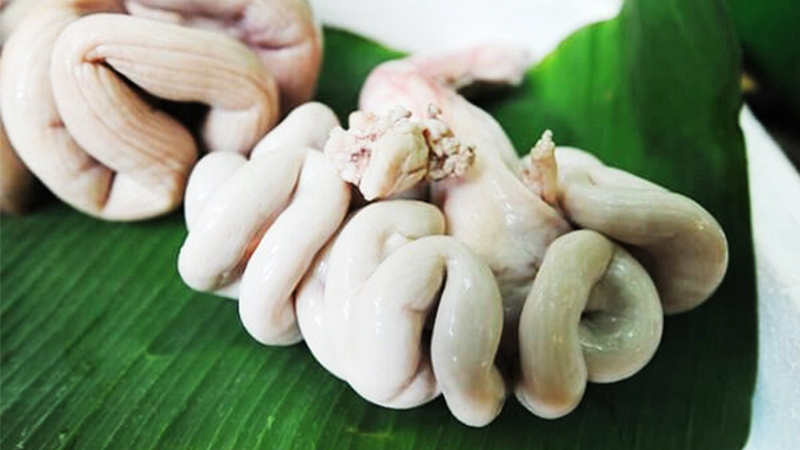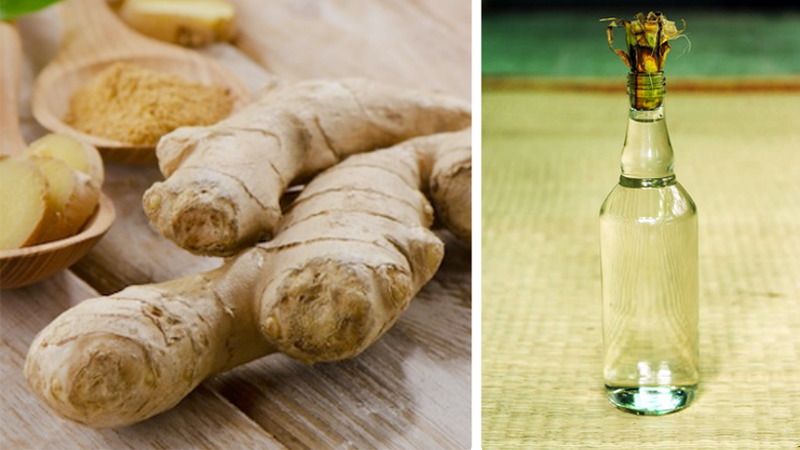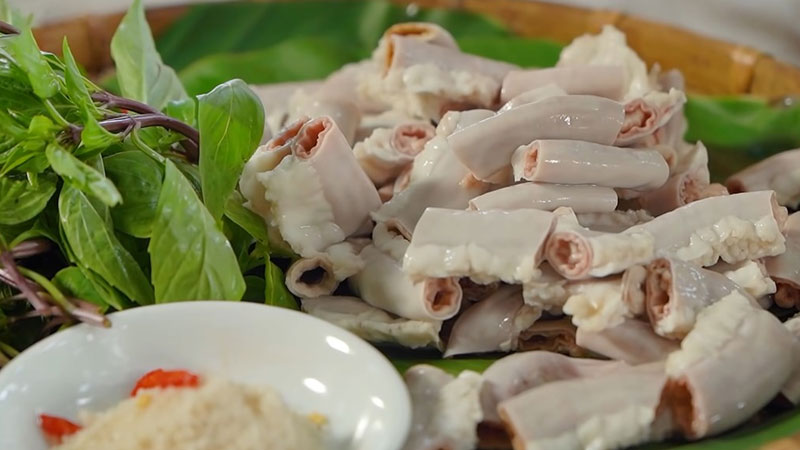Pork small intestine is considered one of the most delicious pork offal, often used to make many attractive dishes and loved by many people. You will discover the secret to cleaning pork small intestine and learn how to cook delicious dishes with it through the article below.
1 What is Pork Small Intestine?
Pork small intestine (called tràng lợn in some regions) is the uterus of the pig used to make many dishes in various ways, from boiling, steaming, stir-frying to grilling.
Pork small intestine is favored for its chewy texture on the outside and sweet, nutty flavor on the inside. On the outside, the small intestine looks similar to pork large intestine but is larger, and when eaten, it has a crunchier texture.
 What is Pork Small Intestine
What is Pork Small Intestine
Besides Vietnam, this offal is also considered a rustic dish in many countries around the world. However, in European and Western countries, pork small intestine is not highly regarded, unlike in Vietnam and other Asian countries such as China and Korea.
Pork small intestine contains high levels of protein and other nutrients that are beneficial to health. Eating it can help reduce stress, fatigue, and improve sleep quality.
2 Tips for Cleaning Pork Small Intestine
 Remove the odor from the pork small intestine using ginger and rice wine
Remove the odor from the pork small intestine using ginger and rice wine
First, remove the membrane and rinse thoroughly with diluted salt water, then drain in a colander.
Next, put the cleaned small intestine into a pot and add a mixture of rice wine, a few slices of ginger, and enough water to submerge the intestine. Boil the small intestine for about 3-5 minutes.
After that, remove the small intestine and soak it in a bowl of cold water to make it chewier, then add some alum powder or white vinegar for about 10 minutes. Finally, rinse with clean water, and it’s ready to be cooked.
3 Delicious Dishes Made with Pork Small Intestine
Stir-fried Sweet and Sour Pork Small Intestine
Are you looking to spice up your family’s lunch with something interesting and unique? If so, stir-fried sweet and sour pork small intestine is a great option to add to your menu. The chewy texture of the small intestine combined with the sour and sweet taste of vegetables will surely bring a delightful twist to your meal.
Preparation
 Stir-fried Sweet and Sour Pork Small Intestine
Stir-fried Sweet and Sour Pork Small Intestine
For reference:
Steamed Pork Small Intestine with Ginger and Scallions
This dish is simple to prepare, uses easily available ingredients, and still retains the freshness of the small intestine. It’s another great option to showcase your cooking skills.
Preparation
Serve the steamed small intestine with the dipping sauce and fresh herbs. The combination of the nutty small intestine, fragrant herbs, and slightly spicy and sour sauce is sure to be irresistible.
 Steamed Pork Small Intestine with Ginger and Scallions
Steamed Pork Small Intestine with Ginger and Scallions
Boiled Pork Small Intestine
Although it’s a simple boiled dish, some skills are needed to ensure the small intestine is tender and retains its chewy texture.
 Boiled Pork Small Intestine
Boiled Pork Small Intestine
Pork small intestine contains high levels of saturated fat and cholesterol. Therefore, consuming it in excessive amounts can increase blood fat levels and negatively impact cardiovascular health. People with obesity, diabetes, high blood pressure, gout, and other similar conditions should limit their consumption to 2-3 times a week, with a serving size of 50-70 grams.
 Notes When Eating Pork Small Intestine
Notes When Eating Pork Small Intestine
With the information and recipes provided above, we hope you can now prepare and enjoy delicious dishes made with pork small intestine. In addition to the dishes mentioned, lòng lợn (pork offal) is also a tasty option!
See also:









